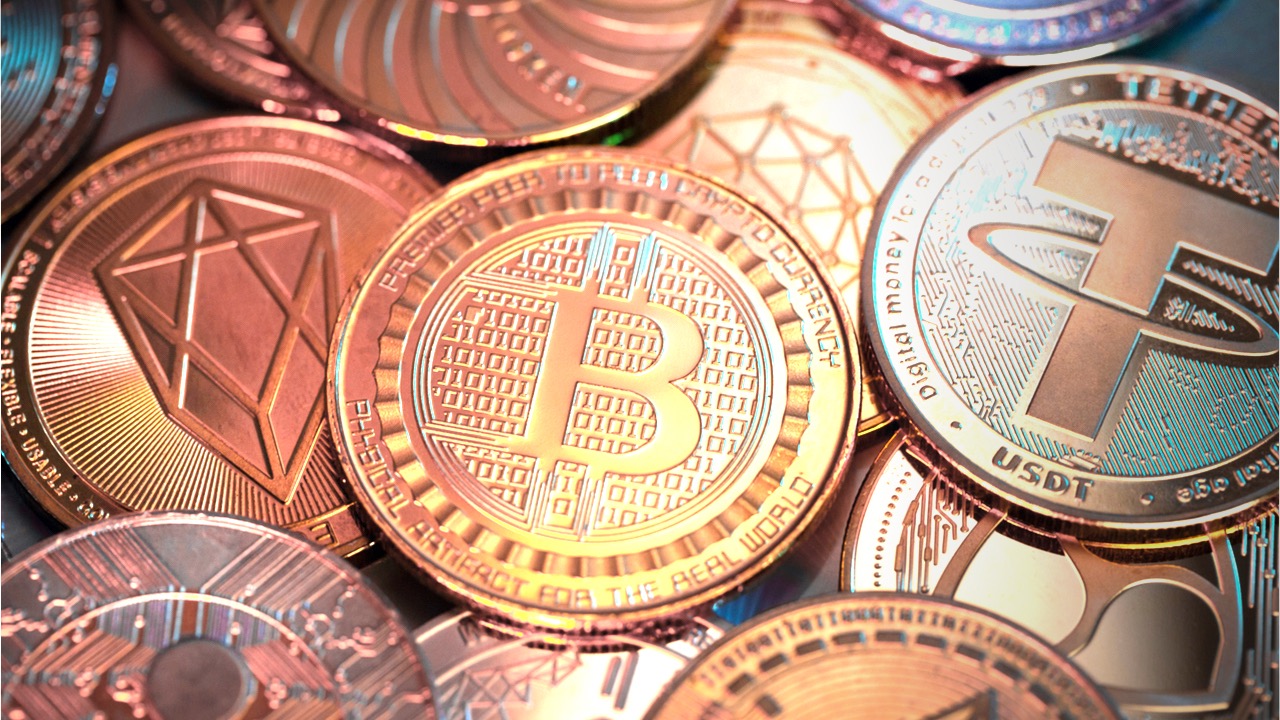Tokenized Real-World Assets: An Appealing Portfolio Diversification Strategy for Modern Investors – Zaid Ismail

Despite just lately garnering a lot of the world’s consideration, conventional exchange-traded funds (ETFs), together with spot bitcoin ETFs, are nonetheless inferior to tokenized real-world belongings (RWA), based on Zaid Ismail, the COO on the future-proof blockchain Mintlayer.
The Appeal of Tokenized Real-World Assets
Zaid Ismail said that, not like common ETFs, buying and selling of tokenized RWAs isn’t curtailed or restricted to regular working hours solely. In addition, tokenized RWA, the blockchain-based digital tokens that characterize bodily and conventional monetary belongings, supply different important benefits over ETFs, together with improved liquidity, world accessibility, and real-time transactions. Tokenized RWAs additionally include elevated transparency, decreased prices, and direct possession. According to the COO, such attributes make tokenized RWAs “a more versatile and appealing choice for modern investors seeking portfolio diversification.”
Despite being seemingly superior to ETFs, the longer term success of tokenized RWAs relies on how world regulators collaborate, in addition to the standardization of guidelines governing such belongings. The embrace of this new manner of dealing with precious belongings by conventional monetary establishments may also be key to the success of tokenized RWA, Ismail added.
Meanwhile, in his written solutions despatched to Bitcoin.com News through Telegram, the Mintlayer COO explains why builders ought to contemplate creating decentralized finance (defi) apps on the Bitcoin community. He additionally shares ideas on among the frequent blockchain challenges reminiscent of community clogging, excessive transaction charges, and the issue of working nodes, in addition to how these decelerate the adoption of the know-how.
Below are Zaid Ismail‘s solutions to the questions despatched.
Bitcoin.com News (BCN): Exchange-traded funds (ETFs) are seen by some because the closest factor the Tradfi ecosystem has to tokenized real-world belongings (RWA). In what methods are the tokenized RWAs superior to the standard ETFs?
Zaid Ismail (ZI): Tokenized Real-World Assets (RWAs) on the blockchain supply important benefits over conventional ETFs, together with 24/7 buying and selling that bypasses the restricted hours of conventional exchanges, improved liquidity, worldwide accessibility, real-time transaction functionality, elevated transparency, decreased prices from fewer intermediaries, enhanced customization choices, and direct possession. Collectively, these attributes make them a extra versatile and interesting selection for contemporary traders searching for portfolio diversification.
BCN: As regulatory frameworks proceed to evolve, how would the cross-border buying and selling and possession of RWAs work, particularly because the Tradfi establishments are dipping their toes into the world of tokenized RWAs?
ZI: In the previous few years, the cross-border buying and selling and possession of tokenized Real World Assets (RWAs) have turn out to be extra possible. However, because the regulatory frameworks evolve, there’s a want for worldwide cooperation and standardization to make sure clean cross-border transactions.
Traditional finance establishments are additionally beginning to get entangled in tokenized RWAs. It’s like they’re testing the waters of this new digital method to belongings. As they achieve this, they might want to work with the regulators to adapt the present rules to the altering panorama.
In essence, the way forward for cross-border buying and selling and possession of tokenized RWAs depends on world collaboration, standardized guidelines, and the willingness of conventional monetary gamers to embrace this progressive manner of dealing with precious belongings.
BCN: Why would an asset proprietor need to undergo the effort – and the educational curve – to tokenize their belongings? What does tokenization change for asset originators and merchants?
ZI: Although asset house owners would possibly initially understand tokenization as a posh course of, with platforms like Mintlayer the method is simplified, lowering hassles for asset house owners. With Mintlayer, tokenization is embedded and easy, so non-technical customers can challenge tokens simply with out having to make use of deployer contracts like on Ethereum.
Additionally, Mintlayer Institutional is constructing a SaaS platform for institutional purchasers that may assist to simplify the method of issuing, monitoring and coping with all of the compliance facets required for tokenization.
Tokenization the advantages it provides can considerably outweigh the preliminary studying curve and energy. Tokenization is a compelling selection for asset originators and merchants as a result of it enhances liquidity and permits fractional possession for high-value belongings like actual property or artwork. It additionally provides world market entry, clear transactions through blockchain, and environment friendly asset administration with good contracts. For traders, particularly in high-inflation areas, tokenized belongings present a secure and accessible funding avenue, revolutionizing asset origination and buying and selling.
BCN: With blockchains nonetheless getting clogged, the spikes in transaction charges, and the issue in working nodes, do you consider that the blockchain infrastructure in the present day is prepared for the tokenization of real-world belongings at scale?
ZI: The present state of blockchain infrastructure, significantly with layer 1 options, certainly faces challenges like congestion, spikes in transaction charges, and difficulties in working nodes. These points turn out to be obvious throughout high-demand durations, as seen with initiatives like Ordinals, which require minting instantly on the Bitcoin mainchain. However, the arrival of layer 2 options like Mintlayer is altering the panorama, signaling that blockchain is certainly gearing up for the tokenization of real-world belongings at scale.
Layer 2 options, reminiscent of Mintlayer, tackle these challenges by offloading transactions, NFTs, and different operations from the principle chain. This method considerably reduces congestion and transaction charges on Bitcoin. By shifting these processes to a secondary layer, we are able to preserve the safety and integrity of the principle blockchain whereas enhancing its scalability and throughput.
Subsequently, inside our personal chain on the Mintlayer community, due to our UTXO infrastructure, it’s potential to batch a number of transactions right into a single one, saving house and decreasing the charges. Furthermore, our HTLC good contract embedded in Mintlayer will enable atomic swaps and lightning community integration, permitting a strategy to route transactions on a peer-to-peer community that doesn’t require tx to be completely saved endlessly on the blockchain.
Our structure not solely permits transaction batching and atomic swaps however Mintlayer’s low node necessities are pivotal in fostering a extra inclusive and decentralized community. The proven fact that anybody with an ordinary PC, or perhaps a Raspberry Pi, can run a node is a testomony to the democratization of blockchain know-how. This accessibility is essential for decentralization, because it permits a wider vary of contributors to contribute to community safety and consensus processes.
The mixture of those developments means that the blockchain infrastructure, particularly with the mixing of layer 2 options like Mintlayer, is certainly able to deal with the tokenization of real-world belongings at scale. By addressing the important thing challenges of layer 1 blockchains and making participation extra accessible, we’re paving the way in which for a extra sturdy, environment friendly, and inclusive blockchain ecosystem able to supporting large-scale asset tokenization.
BCN: The Bitcoin blockchain is alleged to lack defi capabilities, however initiatives like yours are nonetheless making an attempt to convey defi to Bitcoin. Why ought to builders care about constructing their decentralized functions within the Bitcoin ecosystem?
ZI: Although Ethereum considerably revolutionized the defi house years in the past, Bitcoin stays the prime mover in your complete crypto ecosystem, boasting essentially the most liquidity and market share. It not solely has the biggest consumer base however can be essentially the most acknowledged and extensively held cryptocurrency. Building defi functions throughout the Bitcoin ecosystem opens alternatives to faucet into this huge market, probably resulting in greater adoption charges and larger community results.
The decentralized nature of the Bitcoin community provides a degree of safety and belief not discovered in lots of different platforms. By creating defi functions on Bitcoin, builders can leverage this decentralization, thereby lowering the dangers of censorship and single factors of failure.
Additionally, larger entry to Bitcoin’s liquidity is a major benefit for defi functions constructed inside its ecosystem. Developers can faucet into Bitcoin’s substantial liquidity pool, which is very helpful for monetary functions requiring important capital inflows.
In abstract, the Bitcoin ecosystem, augmented by layer 2 options like Mintlayer, presents a novel mix of safety, a big consumer base, and progressive applied sciences. These components make it an interesting platform for builders desperate to create state-of-the-art defi functions.
What are your ideas about this interview? Let us know what you assume within the feedback part beneath.



